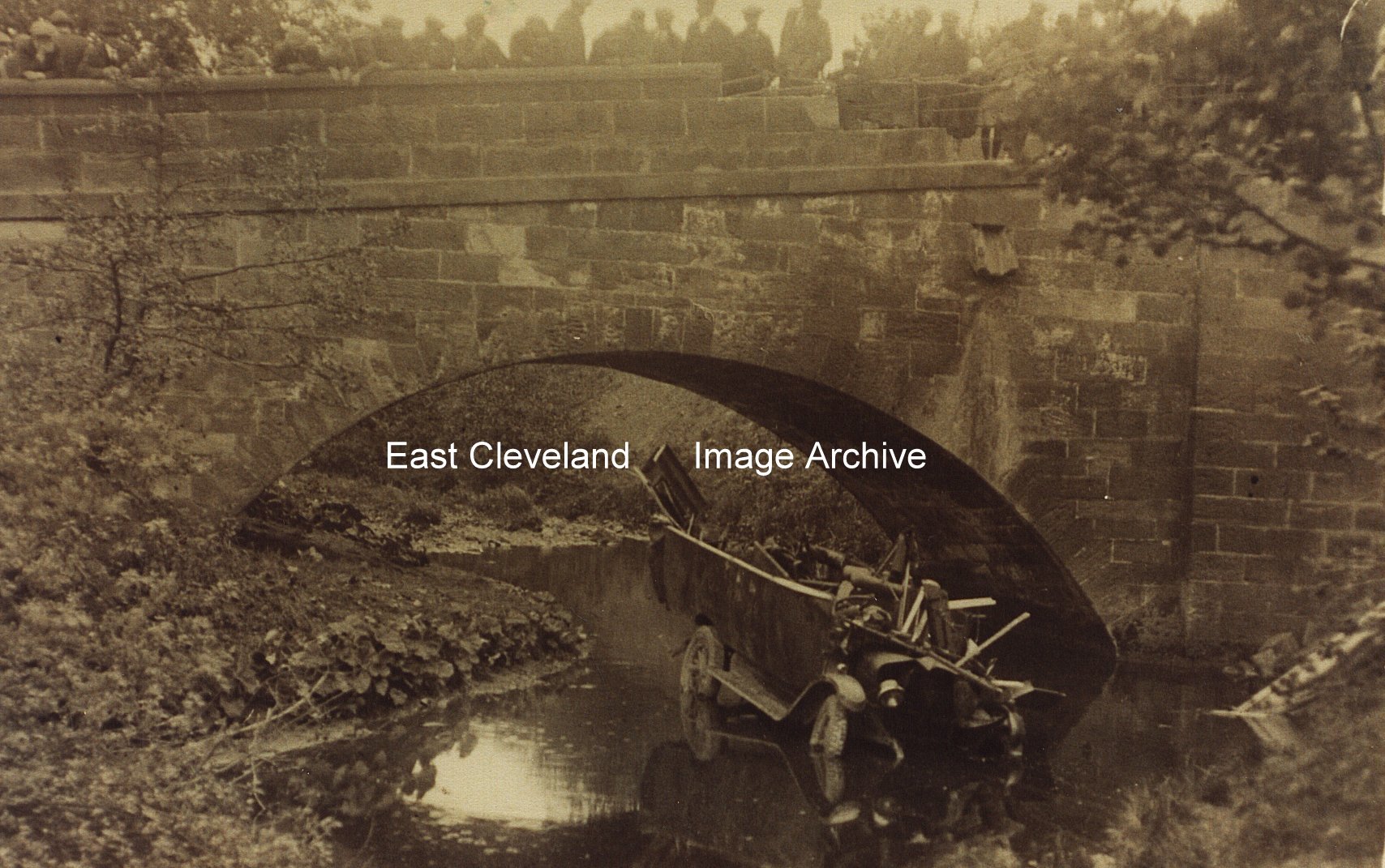
Possibly 1927 I think we have a photograph like this taken from a different angle.
Image courtesy of the David Linton Collection, the Pem Holliday Collection, a CD collection by Derick Pearson and others.
|
|
||
 Possibly 1927 I think we have a photograph like this taken from a different angle. 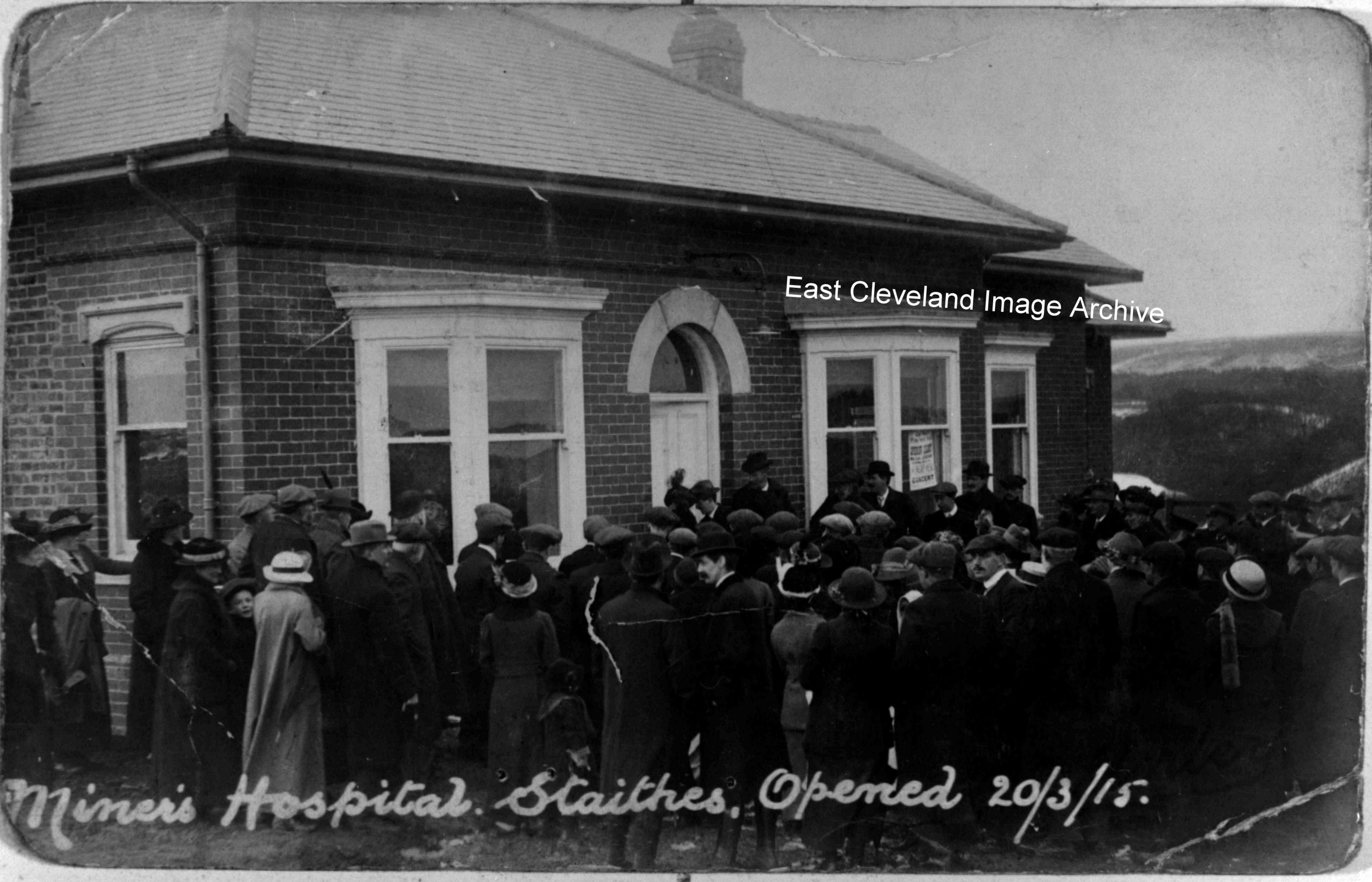 This building which is sited opposite the end of Staithes Lane (is now converted into a house0 but the round tower on the top had to stay. This photograph tells us the hospital was opened on the 20th March 1915. Simon Chapman advised: “As it says on the picture it was the Miners Hospital for any casualties at Grinkle or Boulby Mines. After both of these mines had closed in the 1930s then the hospital was closed as well.” Mike Leyland has assisted with: “I believe the building was owned by the Grinkle Estate and was sold in 1947 along with the rest of the properties and land belonging to the estate.” Image courtesy of Cleveland Ironstone Mining Museum, thanks to Simon Chapman and Mike Leyland for the updates. 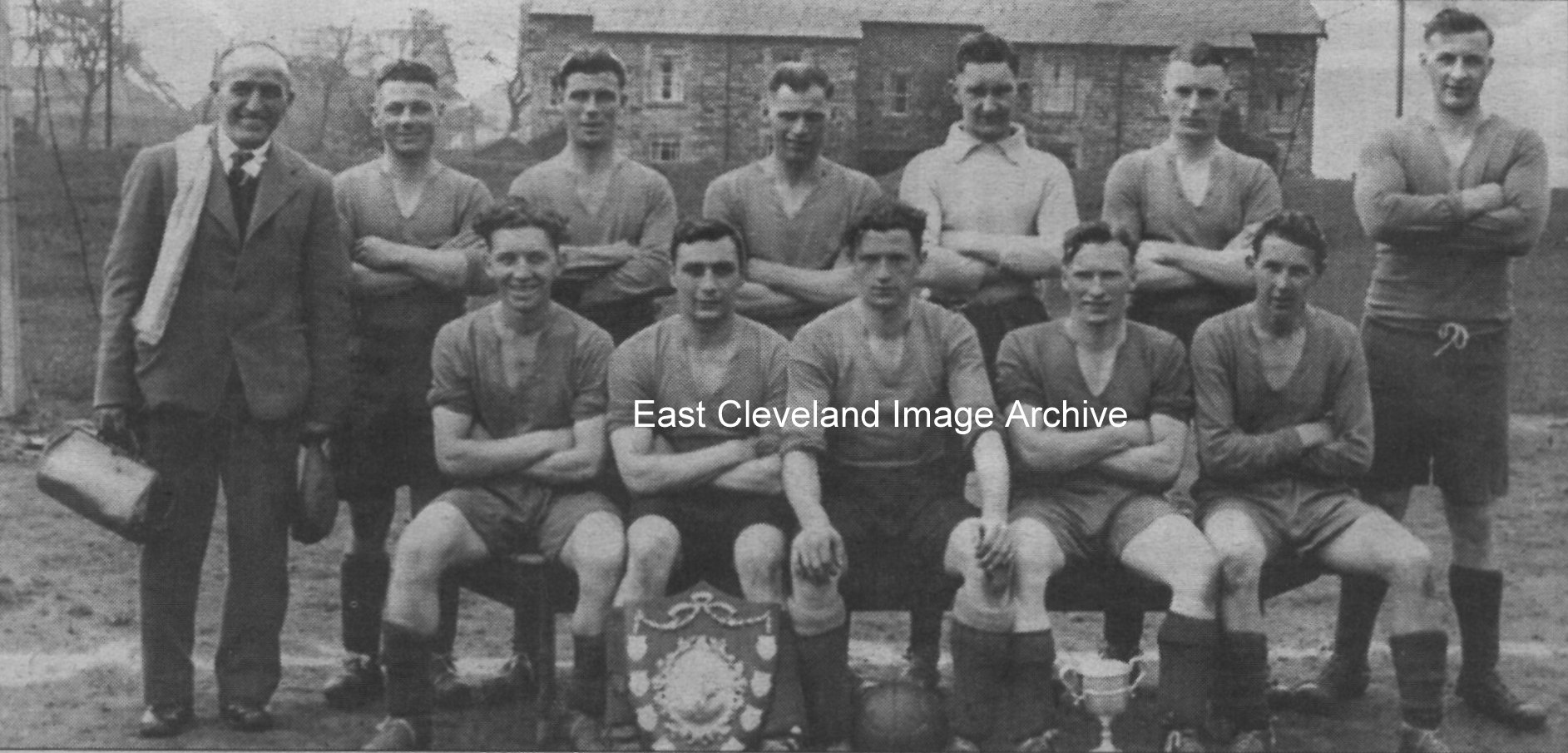 Pictured in 1940 with a back drop to the left of the pit head is Lingdale’s very successful football team; here with their trophies for that season. Back row: Charlie Milburn, Jim Carter, Gordon Dove, Fred Hutton, “Patsy” Wetherall, ??, Harold ” Jammer” Wrigley. Front row: Frank Smith, J. Duane, Maurice Lynas, ” Snowball” Oliver, Harry Harding. Can anybody assist with missing names of the men, or what trophies they won? Image (from a newspaper cutting) courtesy of Mike Holliday. 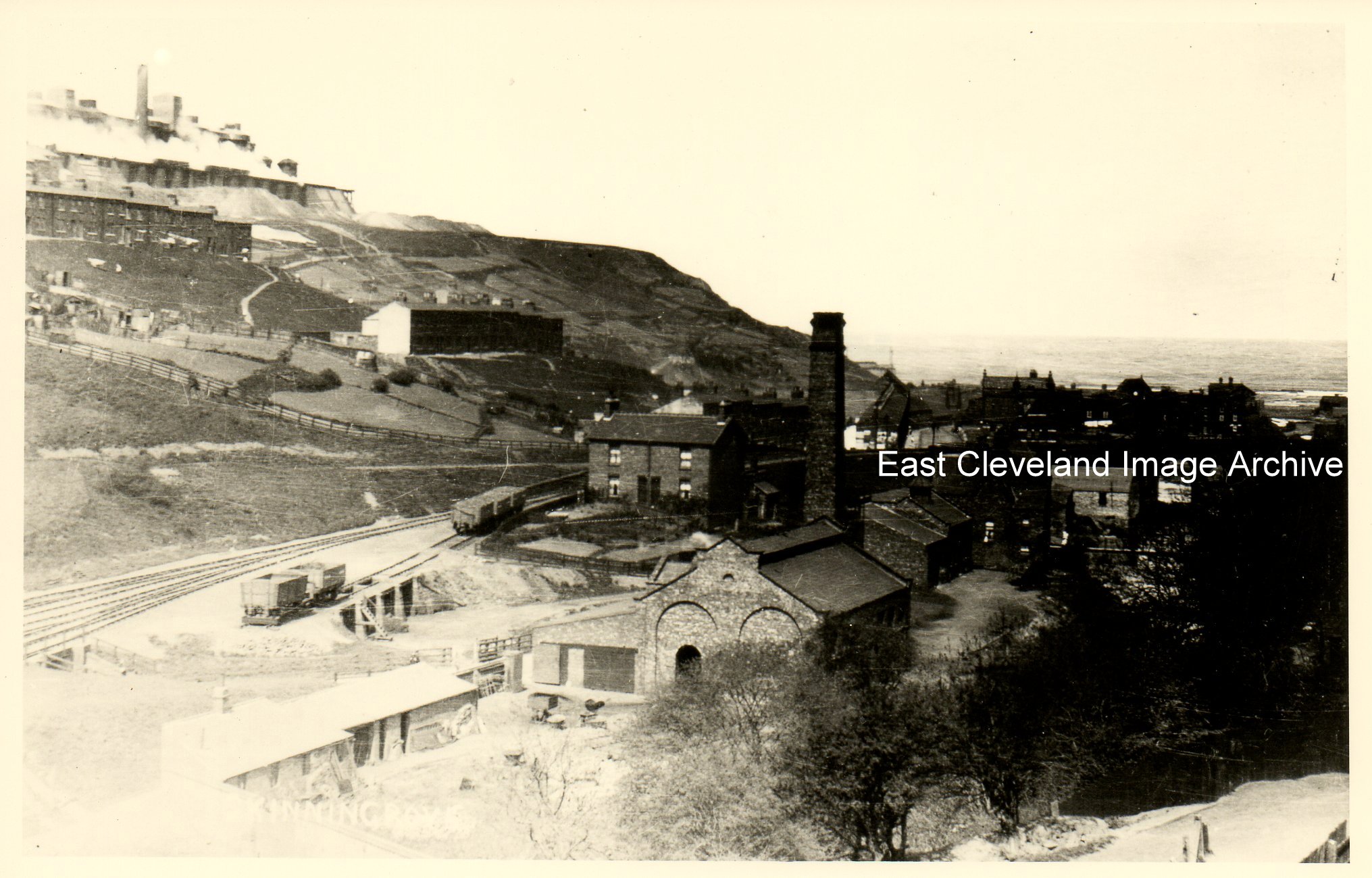 It’s a pretty poor title and time hasn’t been kind to the image either! Some nice architecture on display here, would that be the gas works in the foreground? Derick Pearson confirmed this fact, also advising: “If you look at the left side of the photograph you can just make out the tunnel that went under the railway. We used to walk under this on our way home from school. When it was wet weather it was often flooded. Traffic used to have to go through it in single file.” Image courtesy of the Pem Holliday Collection and others, thanks to Derick Pearson for that update. 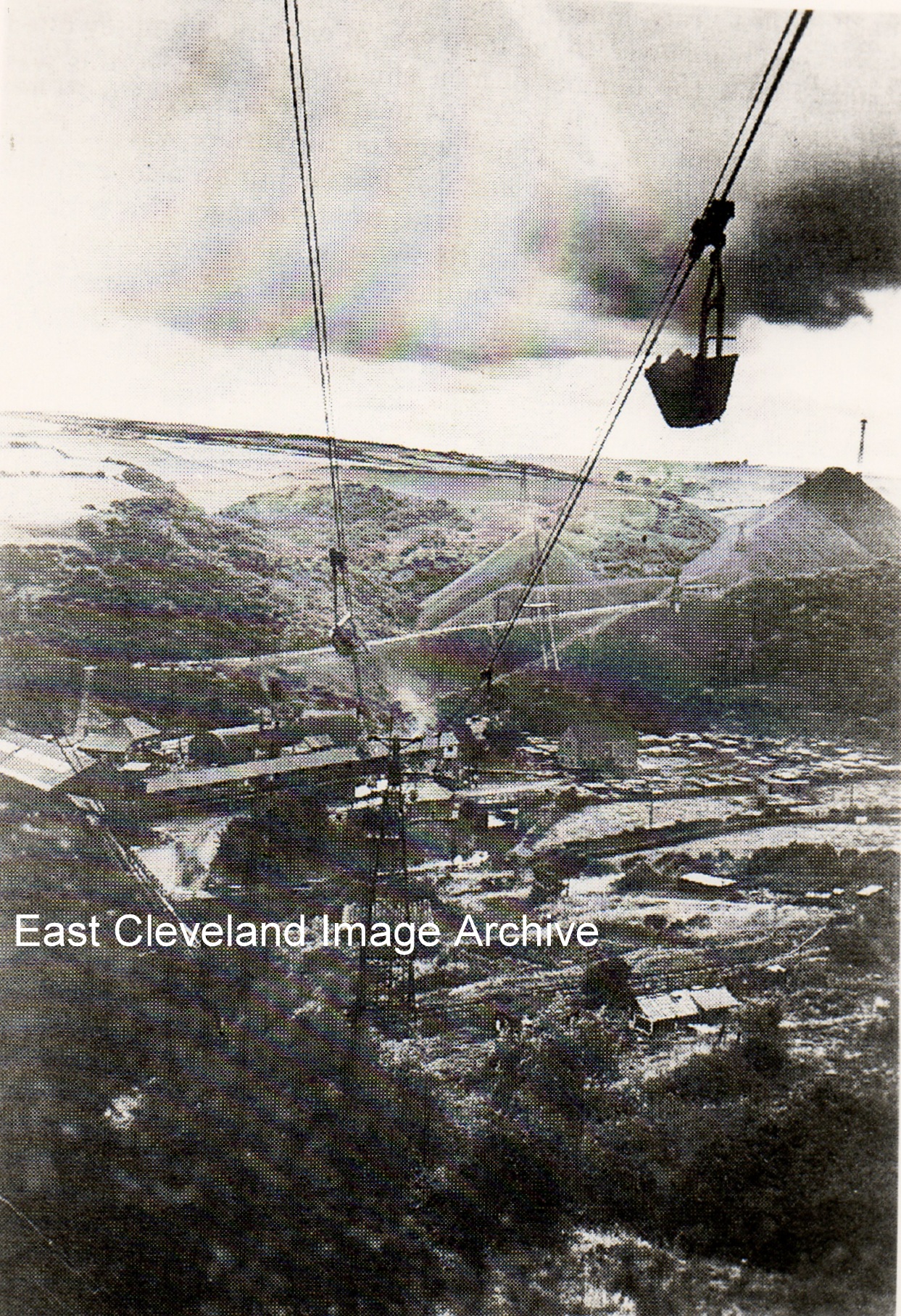 A working photograph of the aerial ropeway, locally known as ’the buckets’. We can see a full bucket of ironstone being taken up to the iron and steel works, with the mine in the distance at the bottom of the picture. Simon Chapman advised: “Loftus mines ironstone was transported up to Skinningrove Works from 1895 by connection into the abandoned workings of the North Loftus mine to avoid paying haulage charges to the N.E.R. By 1932 the North Loftus shaft steam winding equipment was thoroughly antiquated so the aerial ropeway was built to avoid using the shaft which was later filled in.” Image courtesy of the Pem Holliday Collection and others; thanks to Simon Chapman for information in the last paragraph. 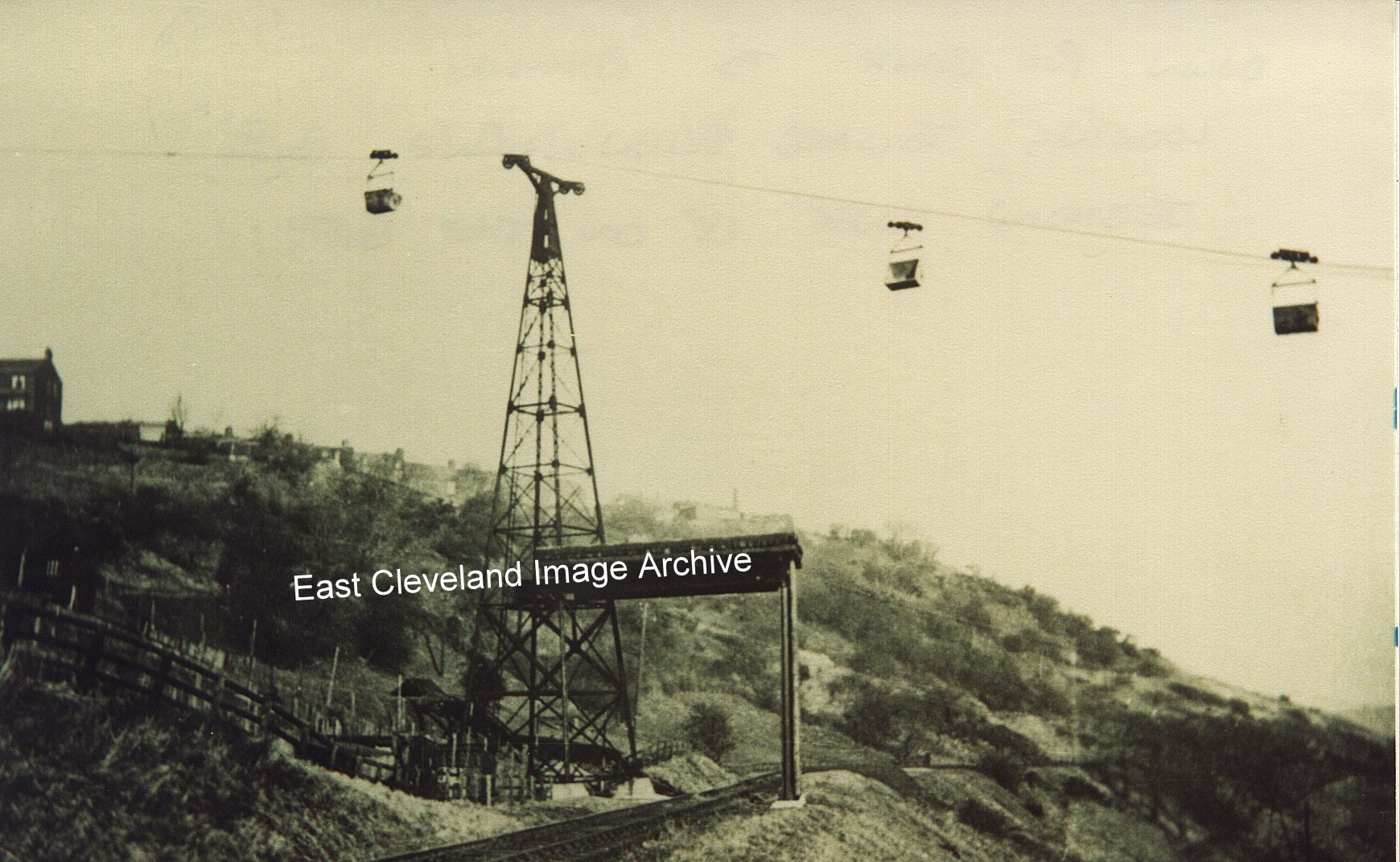 Loftus mines ironstone was transported originally transported from the Loftus (Skinningrove) mine up to Skinningrove Works via the zig-zag railway system along the valley side. From 1895 this transportation occurred via a connection into the abandoned workings of the North Loftus mine to avoid paying haulage charges to the N.E.R. By 1932 the North Loftus shaft steam winding equipment was thoroughly antiquated so the aerial ropeway was built to avoid using the shaft which was later filled in. An aerial ropeway (known locally as ”the buckets”) was constructed to take the stone from the valley floor up to Skinningrove Ironworks on the cliff top. This is the middle stanchion, the roofed structure over the zig-zag railway was to catch any falling stone jerked out of the buckets as a result of passing over the stanchion pulleys. This system was in use until local stone was superseded by cheaper foreign ores. (The topmost stanchion was still in place at the top gates of Skinningrove Iron and Steel Works when I worked there, adapted as a floodlight tower!). Image courtesy of the Pem Holliday Collection and others, thanks to Simon Chapman for the details of these changes in transportation. 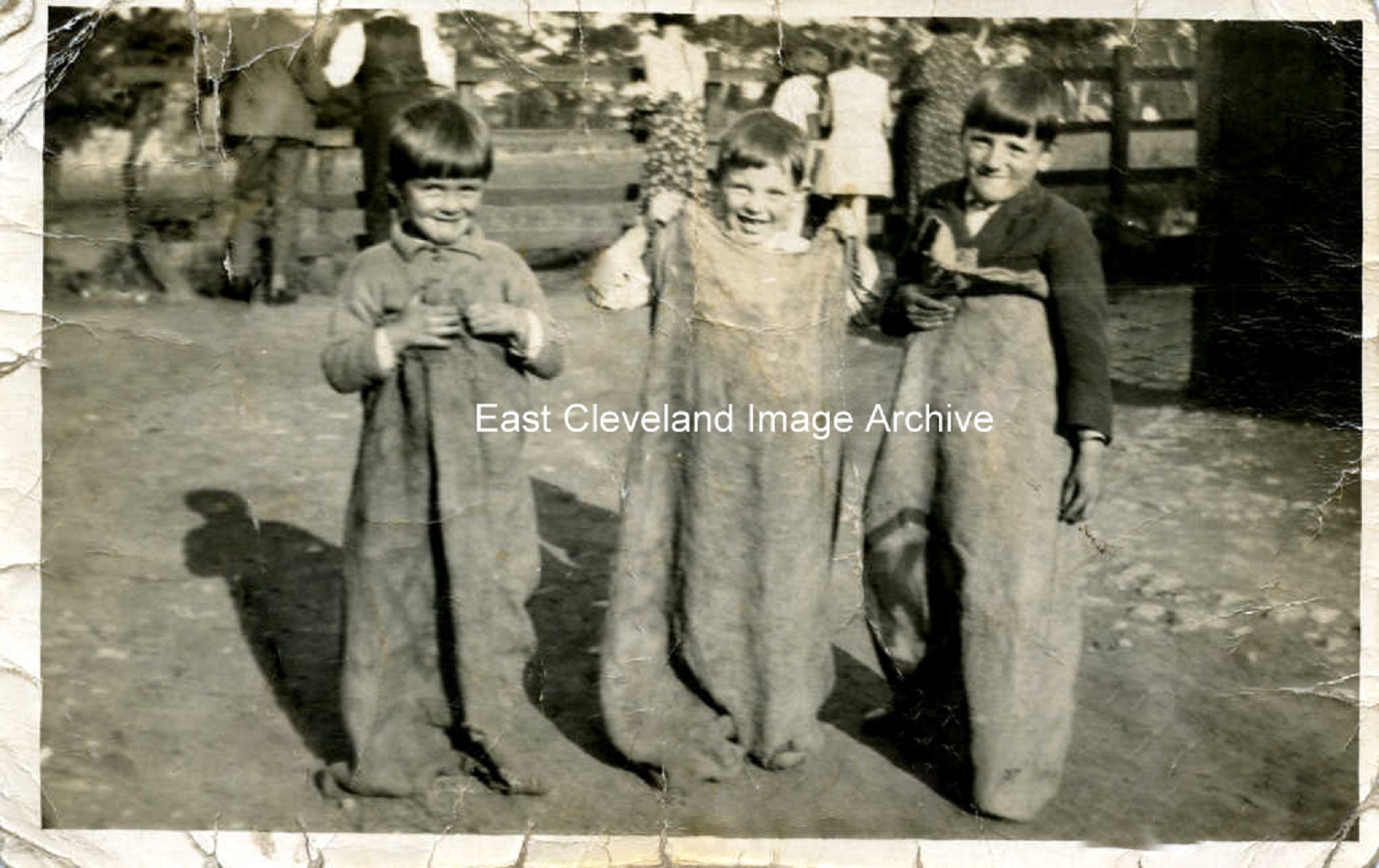 Denis Codling (is the boy on the right) with friends ready for the sack race at Loftus Junior School, about 1935. Image and names to date courtesy of Mrs. J. Wilson. 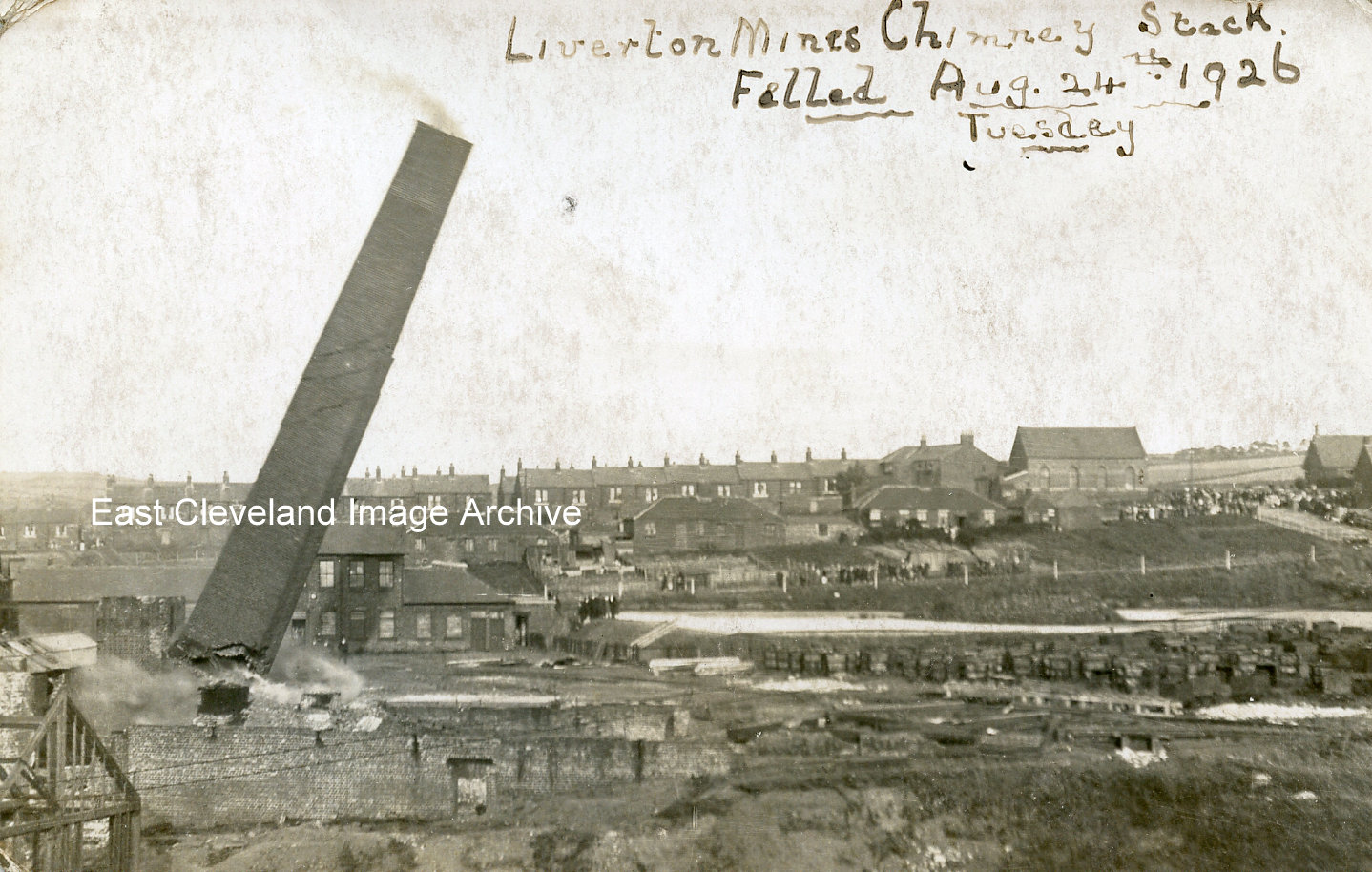 As the caption on the photograph says – Liverton Mines chimney stack felled on Tuesday 24th August 1926 – obviously a well attended event. Nowadays ‘elf and safety’ would have a field day!! Image courtesy of the David Linton Collection, the Pem Holliday Collection and others. 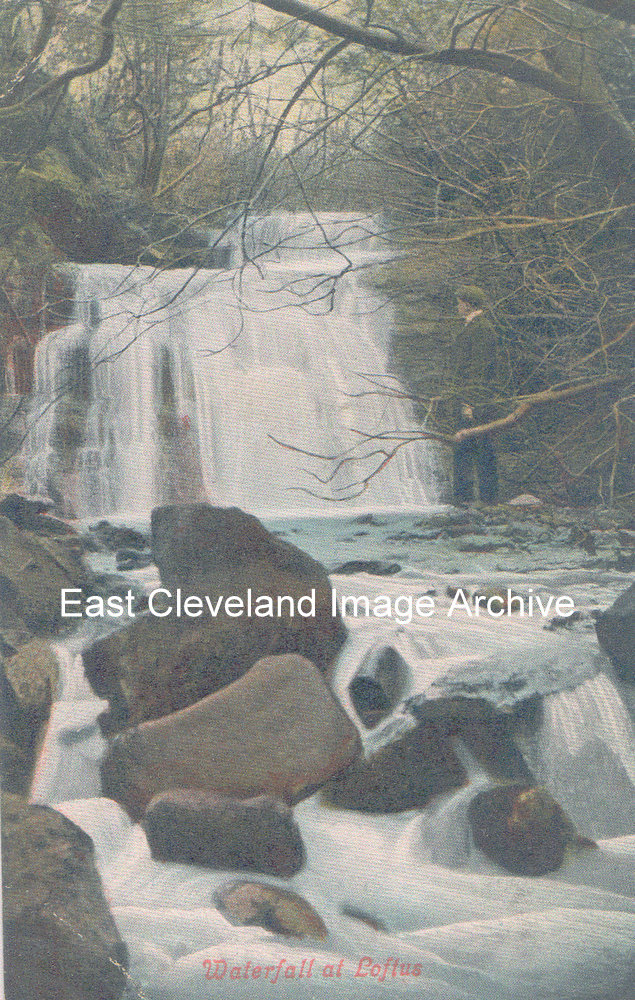 The waterfall doesn’t look like we see it now; the caption reads ”Loftus waterfall” and is taken from a Cooke’s Fancy Bazaar postcard, being postmarked 1904 and may possibly date from pre the present one built of brick. Derek Pearson suggests: ”We used to call this the “Steps” in the “Narrows” before it was constructed with brick/concrete. The photograph was taken from a lower standpoint again than the scene in front. Espiner’s waterfall descended with a lesser number of levels.”
Sketch of one of the Zeppelin raids over Skinningrove Ironworks, these occurred in September 1915, April 1916 and possibly May 1916; it came to the Archive as a postcard. Does anyone know the origins of this sketch? Derick Pearson suggests that deeper examination of the image suggests that S. Grayson may have been the creator of this particular postcard, does anybody have any update on that. The Archive will research this possibility. Image courtesy of John Hannah, with information regarding Zeppelin raids from Zetland School (Loftus) logs; also thanks to Derick Pearson for his suggestion. |
||
Recent Comments